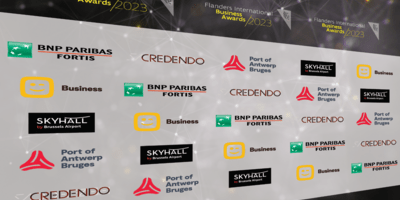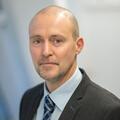
Port of Antwerp-Bruges
Speak of international business and our ports come to mind. For example, the Port of Antwerp-Bruges is Europe’s second-largest port and largest integrated chemical cluster, and thus one of the main lifelines of Flanders’ economy. In addition to all those superlatives, the port also wants to be the first world port that reconciles economy, people and climate. Erwin Verstraelen, Chief Digital & Innovation Officer, explains how this ambition is put into practice.
Perfect storm
“In 2018, we outlined a new vision, mission and strategy with a clear ambition: we want to be a lever toward a sustainable future. As a global community, we face gigantic challenges: climate change and the energy transition, the geopolitical situation, digital transformation ... All these forces interacting create the perfect storm. You can see this as a threat or an opportunity. We chose the latter option!
With more than 1,000 companies on our grounds, we are not just a port authority but a port platform, harboring a lot of innovation potential as well. The solutions to these issues will have to come from us, by stimulating, attracting, developing, implementing and marketing innovation. We achieve this through partnerships such as with The Beacon, an ecosystem where researchers, startups and scaleups and established companies work together on IoT and AI applications.
In this pioneering role, we focus on three areas: digitization for a smart port, accelerating the energy transition and enabling the circular economy to flourish.”
Climate neutrality in 2050
“As Europe’s largest chemical cluster, we need to be a catalyst for the energy transition, making the transition to a non-fossil energy-based cluster. For example, we are taking an active pioneering role in becoming the European import hub of green hydrogen. We are working in partnerships to revalue waste heat from industry and capture CO2.
We also decided to reserve the port site where Opel Antwerp used to assemble its cars exclusively for the circular economy. This site is now also known as NextGen District, where innovative companies will build recycling activities and a production unit for green hydrogen.”
We have a dream
“As a port authority, we need to continuously see, hear, smell and feel what is happening. We are therefore implementing technologies that roll out a digital nervous system covering an area of about 120 km2. Here, we’re talking drones, sensors, smart cameras and so on. To make this a success, there are some hurdles to overcome, though.
In 2018, we wanted drones to fly autonomously in the port beyond the visual line of sight – that is, further than humans can see the drone. The goal is for the drones to assist the fire and police departments, for example. However, initially, this proved to be legally impossible on all counts. But today, this dream has become a reality: a world first.
We understand we can weigh in on decisions more strongly than, say, a startup or scaleup. That’s why we facilitate promising potential. For example, five years ago, a startup knocked on our door with a technology to remotely control barges. Today, they serve a lot of commercial cargo customers with their tech, another world first. Why are we supporting this? Inland navigation accounts for 40% of our cargo and there are labor shortages there as well. If one captain can control multiple ships remotely, we can increase our capacity with the same number of people, offering a major impact.”
Outside-in
“Our innovation projects are often opportunity-driven: what can a technology do for us? Drones with hyperspectral cameras were first developed to detect diseases on agricultural crops. In our case, they detect oil spills in water. For us as the fifth largest bunkering port in the world, this means significant savings in cleanup costs every year.
Sometimes we organize Open Innovation Calls where companies at the port post a problem statement on our website. Anyone may send in an idea for a solution; the winner gets to develop the idea further. That way, the whole world becomes your brain. I think this illustrates the way we should continue to go: open, ambitious, innovative and positive. After all, we achieve more by working together.”
Port of Antwerp-Bruges
- Europe’s second-largest port
- Largest integrated chemical cluster in Europe
- Generates about 164,000 direct and indirect jobs and nearly EUR 21 billion in added value

